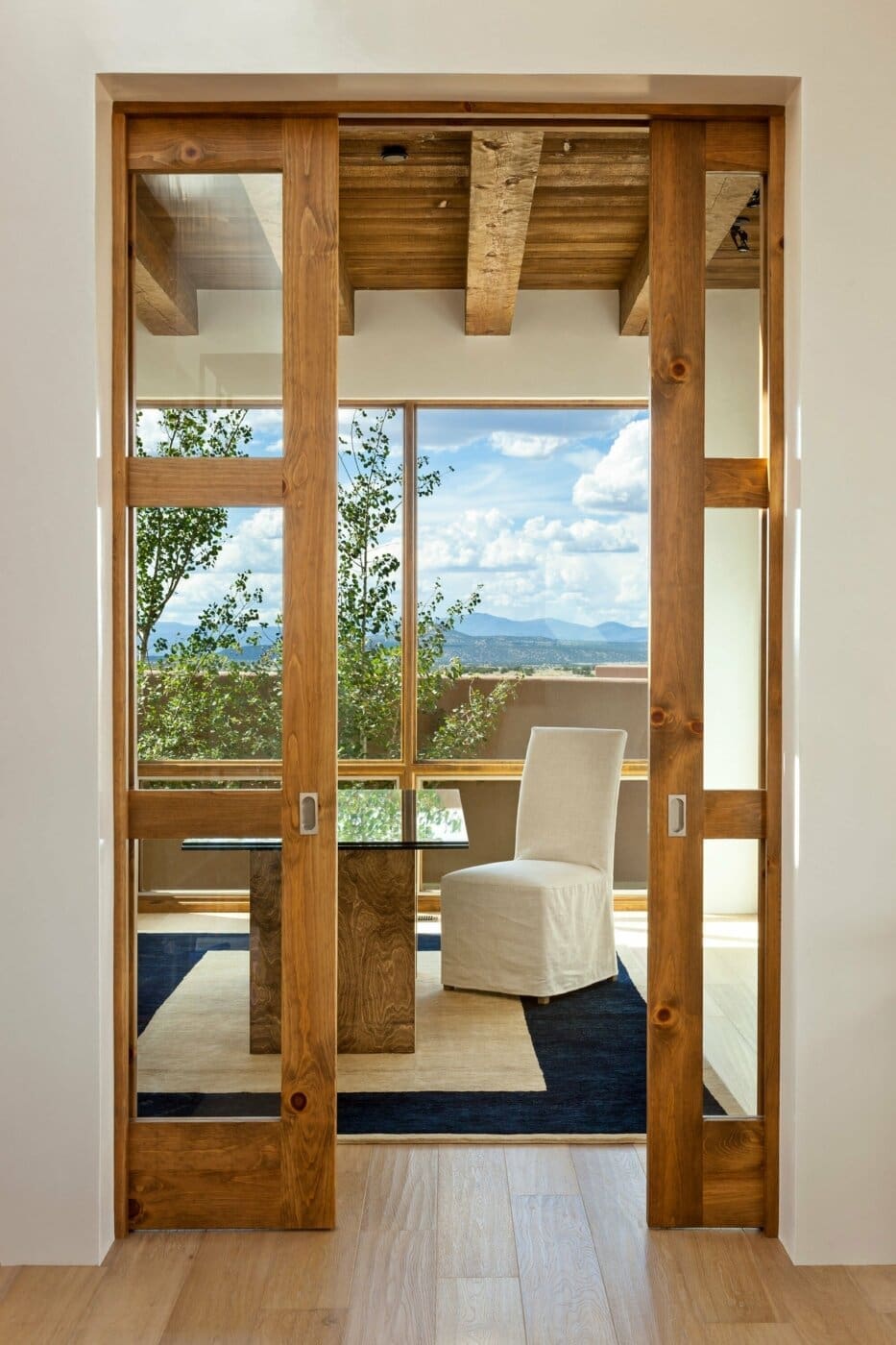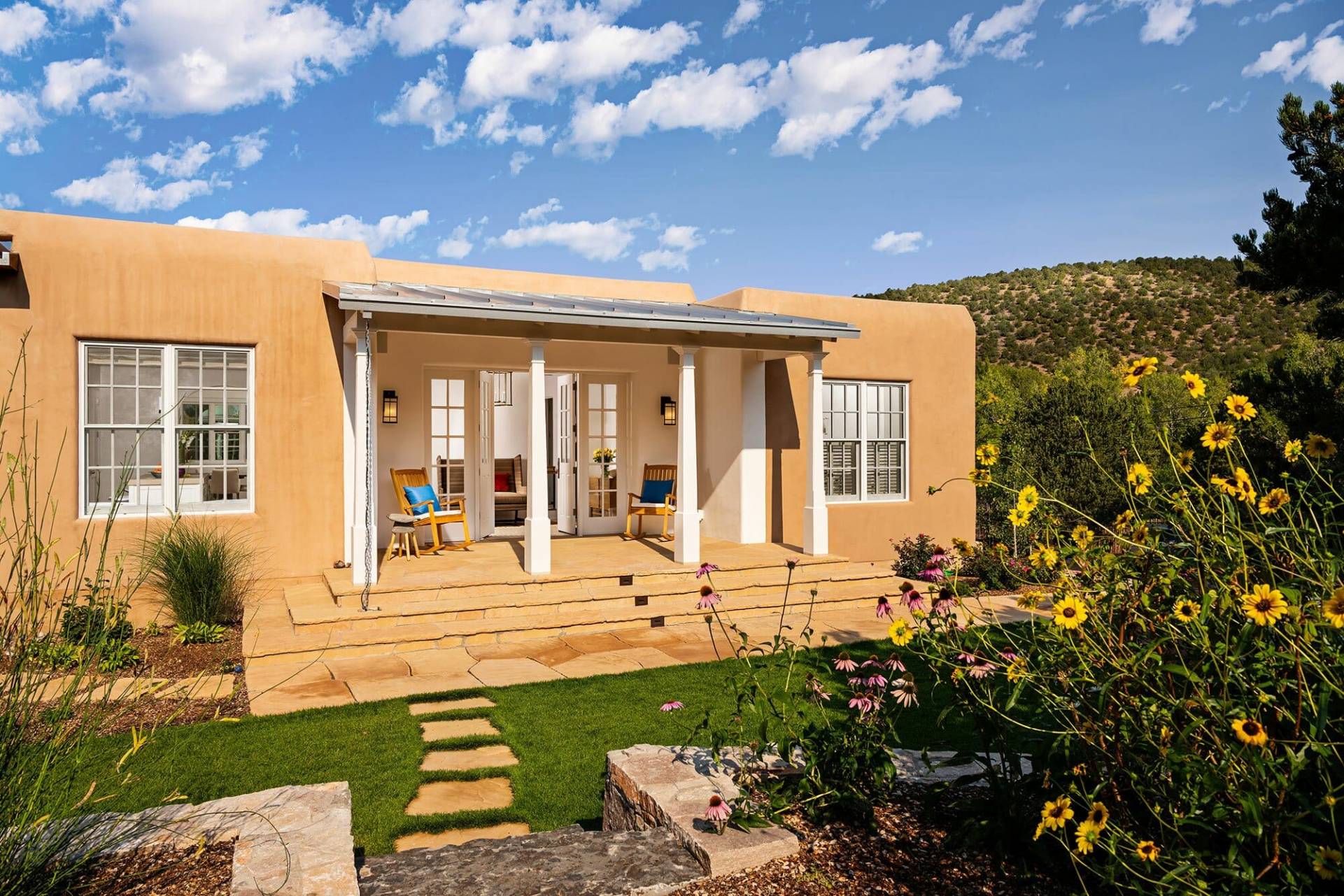
Guidelines for Building Green
Tierra Concepts has been working with Green Building design concepts for since our founding over 30 years ago. Many people are now choosing home designers in New Mexico that incorporate green and high performance building guidelines when remodeling and building custom homes. Further, the City and County of Santa Fe have adopted Green Building Codes that apply to all new residential buildings.
The Benefit
By reducing a home’s environmental footprint a homeowner can lower operating costs. A high performance building will enjoy increased comfort due to fewer drafts, better humidity control and better indoor air quality, and will benefit from enhanced durability and less maintenance based on the longer-lived components and systems utilized.
THERE ARE SIX PRIMARY AREAS OF FOCUS FOR GREEN BUILDING DESIGN:
- Lot Design & Development
This area of focus deals with such issues as saving trees, storm water retention, and building orientation for passive solar heating and cooling. This is a good illustration of how beginning with the end goal in mind improves our overall success. - Resource Efficiency
Key areas of focus for resource efficiency include reducing job site waste, recycling construction materials, and understanding the embodied energy of building materials. This might be best determined by a life-cycle analysis beginning with the raw material acquisition, then on to the manufacturing process, the homebuilding process, its impacts during operation and maintenance, and finally demolition and reuse. - Energy Efficiency
This area deals with the energy consumption during the life of operating the home. We begin with a tight building envelope, and then maximize the efficiency of all energy consuming appliances as well as possibly using active solar systems. A new global initiative calls for all new buildings to use half the fossil-fuel energy they would typically consume, and to be “carbon-neutral” by the year 2030. - Water Efficiency
Major concerns for this category include indoor water use and landscape irrigation. Strategies to reduce consumption include re-circulating hot water systems, instant (point-of-use) water heaters, Energy Star dishwashers and washing machines, water-efficient shower heads and faucets, ultra-low-flow toilets, drip irrigation, rainwater catchment, and gray water re-use systems. - Indoor Environmental Quality
This is where we seek to minimize and manage potential sources of pollutants within the home. We consider pollutants in the mechanical room, the garage, and in products using formaldehyde. We also consider alternatives to the plywood and particle board used for the walls and cabinets. It is wise to seal off the mechanical room and garage from the interior spaces and avoid using products containing formaldehyde. We can specify cement-based backer board for tile installations. We are diligent about keeping water out of the insides of the walls, in order to avoid mold. - Operation & Maintenance by Homeowner
This is the crucial final element and a big opportunity for the builder to educate the new owner about alternatives to toxic cleaning substances and lawn and garden chemicals. We will point out best-use water and energy-saving practices. A homeowner’s manual full of helpful tips and resources will be left in the home for reference.
